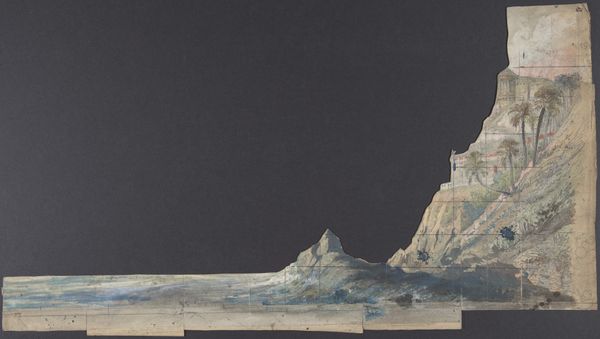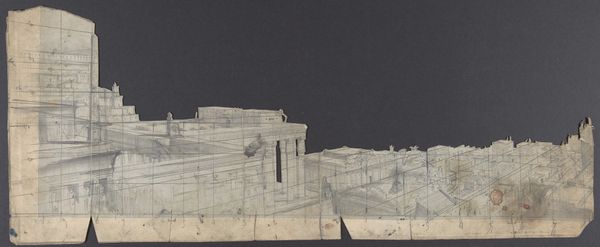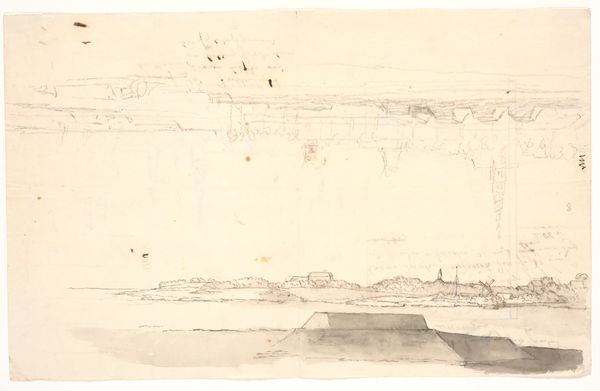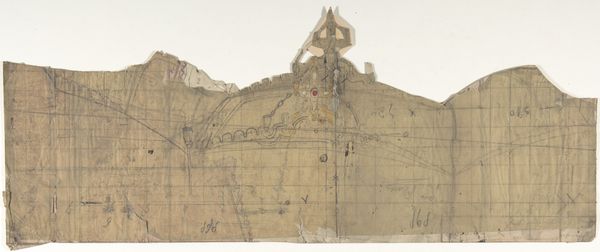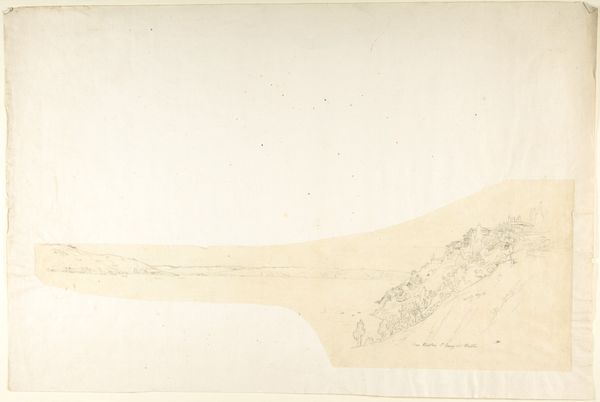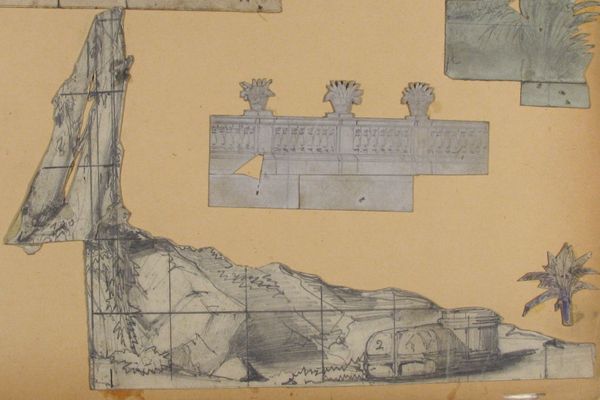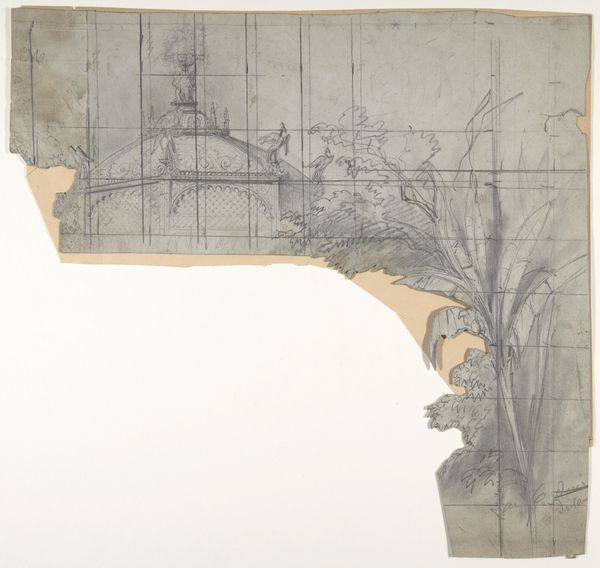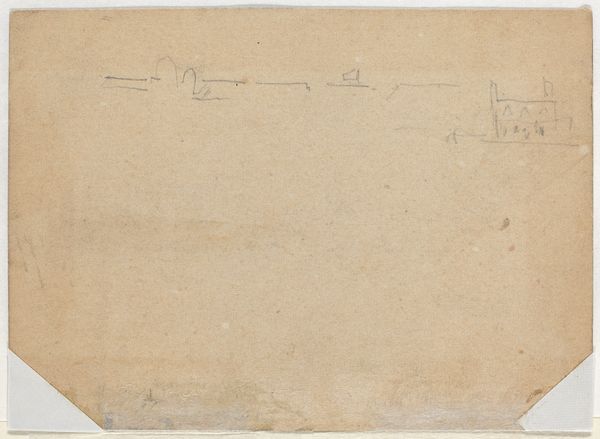
Copyright: Public Domain
Eugène Cicéri created this stage set design with graphite and watercolor, during a time when Paris was the center of theatrical innovation and spectacle. Consider this image within the context of 19th-century French colonialism. Stage designs like this often depicted exoticized "other" lands, reflecting and reinforcing the imperialist fantasies of the time. The idyllic coastal scene, with its blend of European-style buildings and tropical vegetation, suggests a romanticized vision of a far-off, perhaps colonized, land. This imagined geography served to entertain audiences, but also perpetuated a certain power dynamic. How does the picturesque quality of the scene mask the realities of colonial exploitation and cultural appropriation? Think about how stage designs like this contributed to a collective imagination that both romanticized and dominated non-Western cultures. Notice how the artist uses soft watercolor washes to evoke a sense of distance and fantasy, inviting viewers to escape into a world far removed from their own. It’s in this constructed space that narratives of identity and power were carefully staged.
Comments
No comments
Be the first to comment and join the conversation on the ultimate creative platform.
